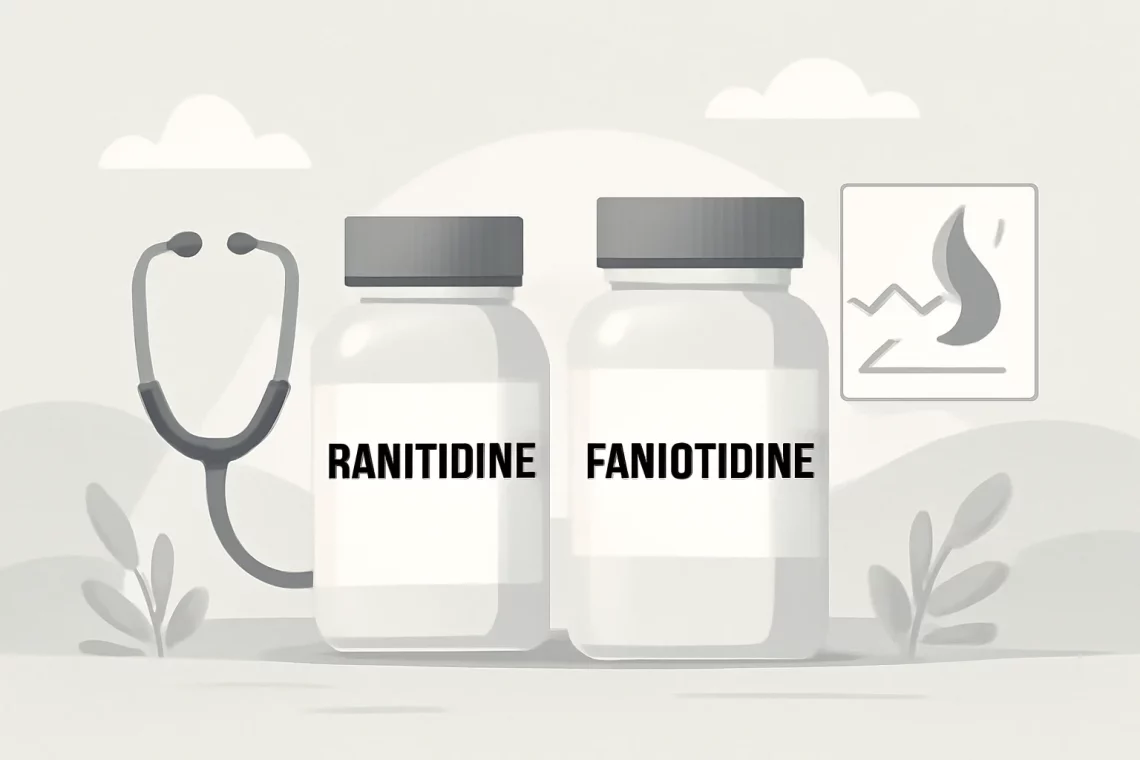
Ranitidine vs Famotidine: Which Heartburn Relief is Better?
Ranitidine and famotidine are both medications commonly used to treat conditions related to excessive stomach acid. They belong to a class of drugs known as histamine-2 (H2) blockers, which work by reducing the amount of acid produced by the stomach. Understanding these medications and their differences can be crucial for individuals dealing with acid-related disorders, such as gastroesophageal reflux disease (GERD), peptic ulcers, and Zollinger-Ellison syndrome.
As the prevalence of acid-related conditions continues to rise, it is essential for patients and healthcare providers to be informed about the available treatment options. While both ranitidine and famotidine are effective in managing these conditions, they differ in various aspects, including their mechanisms of action, side effects, and potential interactions with other medications. This article aims to provide a comprehensive overview of ranitidine and famotidine, helping individuals make informed decisions regarding their treatment options.
Understanding Ranitidine
Ranitidine, once widely prescribed, is a medication that inhibits the action of histamine on the H2 receptors of the stomach’s parietal cells. By blocking these receptors, ranitidine effectively decreases the production of gastric acid. This reduction in acidity can provide relief for individuals suffering from heartburn, acid reflux, and other related conditions.
Historically, ranitidine was considered a go-to medication for those experiencing excess stomach acid. It was available both over the counter and by prescription, making it accessible for many patients. Its effectiveness and relatively low cost contributed to its popularity in treating a variety of gastrointestinal issues.
However, in recent years, ranitidine faced scrutiny due to safety concerns. Research indicated that some formulations of ranitidine could contain a contaminant called N-nitrosodimethylamine (NDMA), a substance considered a probable human carcinogen. This discovery led to the withdrawal of many ranitidine products from the market, prompting patients and healthcare providers to explore alternative treatment options.
Despite these concerns, ranitidine was effective for many patients before the issues arose. Doctors prescribed it for short-term relief of symptoms and, in some cases, for long-term management of chronic conditions. Patients appreciated the quick onset of action and the relief it provided from discomfort caused by excessive gastric acid.
In summary, while ranitidine has a storied history as an effective H2 blocker, its recent safety concerns have necessitated a shift in focus toward other alternatives, primarily famotidine, which offers similar benefits without the associated risks.
Exploring Famotidine
Famotidine is another H2 blocker that functions similarly to ranitidine by inhibiting stomach acid production. It works by selectively blocking the H2 receptors in the stomach, leading to a decrease in the secretion of gastric acid. Famotidine is often prescribed for the same conditions that ranitidine was used to treat, including GERD, peptic ulcers, and Zollinger-Ellison syndrome.
One of the significant advantages of famotidine is its safety profile. Unlike ranitidine, famotidine has not been associated with the same level of safety concerns, making it a more favorable option for long-term management of acid-related disorders. This has led to increased usage among healthcare providers, especially in light of the recent issues surrounding ranitidine.
Famotidine is available both as a prescription and over-the-counter medication, allowing individuals to select an appropriate option based on their needs. Patients often find famotidine to be effective in managing their symptoms, with many reporting relief from heartburn and acid reflux after taking the medication.
In addition to its effectiveness, famotidine is also associated with fewer drug interactions compared to other acid-reducing medications. This makes it a suitable choice for patients who may be taking multiple medications for other health conditions.
Moreover, famotidine’s onset of action is relatively quick, providing relief within a short period after ingestion. This rapid response makes it a popular choice for individuals seeking immediate relief from discomfort.
To summarize, famotidine stands as a robust alternative to ranitidine, offering similar benefits with a more favorable safety profile. Patients who have been affected by the withdrawal of ranitidine can find comfort in knowing that famotidine is a reliable option for managing their acid-related conditions.
Comparing Efficacy and Safety
When comparing ranitidine and famotidine, it’s essential to consider their efficacy, safety, and patient experience. Both medications are effective in reducing stomach acid and alleviating symptoms associated with acid-related disorders. However, the differences in their safety profiles have become a significant factor for patients and healthcare providers.
Efficacy-wise, studies have shown that both ranitidine and famotidine effectively decrease gastric acid secretion. However, famotidine may have a slight edge in terms of potency; it is often considered more effective at lower doses compared to ranitidine. This means that patients may require less famotidine to achieve the same therapeutic effect, which can be beneficial in minimizing potential side effects.
Safety is a critical aspect of any medication, and the recent concerns surrounding ranitidine have led many to prioritize famotidine as a safer option. The absence of harmful contaminants in famotidine formulations has reassured both patients and healthcare providers. This has contributed to its growing acceptance as the preferred H2 blocker.
Side effects for both medications are generally mild and may include headaches, dizziness, and gastrointestinal disturbances. However, famotidine’s lower incidence of side effects and drug interactions makes it a more attractive choice for many patients, particularly those who may be on multiple medications.
Patient experience also plays a crucial role in the choice between ranitidine and famotidine. Many individuals report that famotidine provides quicker and more effective relief from their symptoms compared to ranitidine. This positive feedback has been a driving factor in its increased usage in recent years.
In conclusion, while both ranitidine and famotidine have proven effective in treating acid-related conditions, famotidine’s favorable safety profile and patient experiences position it as the more reliable choice in today’s healthcare landscape.
Making an Informed Choice
Choosing between ranitidine and famotidine requires careful consideration of various factors, including individual health needs, medication history, and potential side effects. As the understanding of these medications evolves, patients are encouraged to engage in open discussions with their healthcare providers to determine the best treatment plan.
Patients who have previously relied on ranitidine may find themselves at a crossroads, especially if they experienced relief from their symptoms using this medication. However, the safety concerns associated with ranitidine should not be taken lightly. Consulting with a healthcare provider can provide clarity on the risks and benefits of each medication, allowing for a tailored approach to treatment.
In addition to discussing medication options, lifestyle modifications can also play a significant role in managing acid-related conditions. Dietary changes, weight management, and avoiding triggers such as specific foods or stress can complement medication therapy and enhance treatment outcomes.
Ultimately, the decision-making process should be collaborative, with patients actively participating in discussions about their care. This empowerment can lead to better adherence to treatment plans and improved health outcomes.
In summary, while ranitidine and famotidine are both effective H2 blockers, the recent safety concerns surrounding ranitidine have shifted the focus toward famotidine as a safer alternative. Engaging in informed discussions with healthcare providers can help patients make the best choices for their health and well-being.
**Disclaimer:** This article is for informational purposes only and should not be considered medical advice. Always consult a healthcare professional for any health-related concerns or questions.




